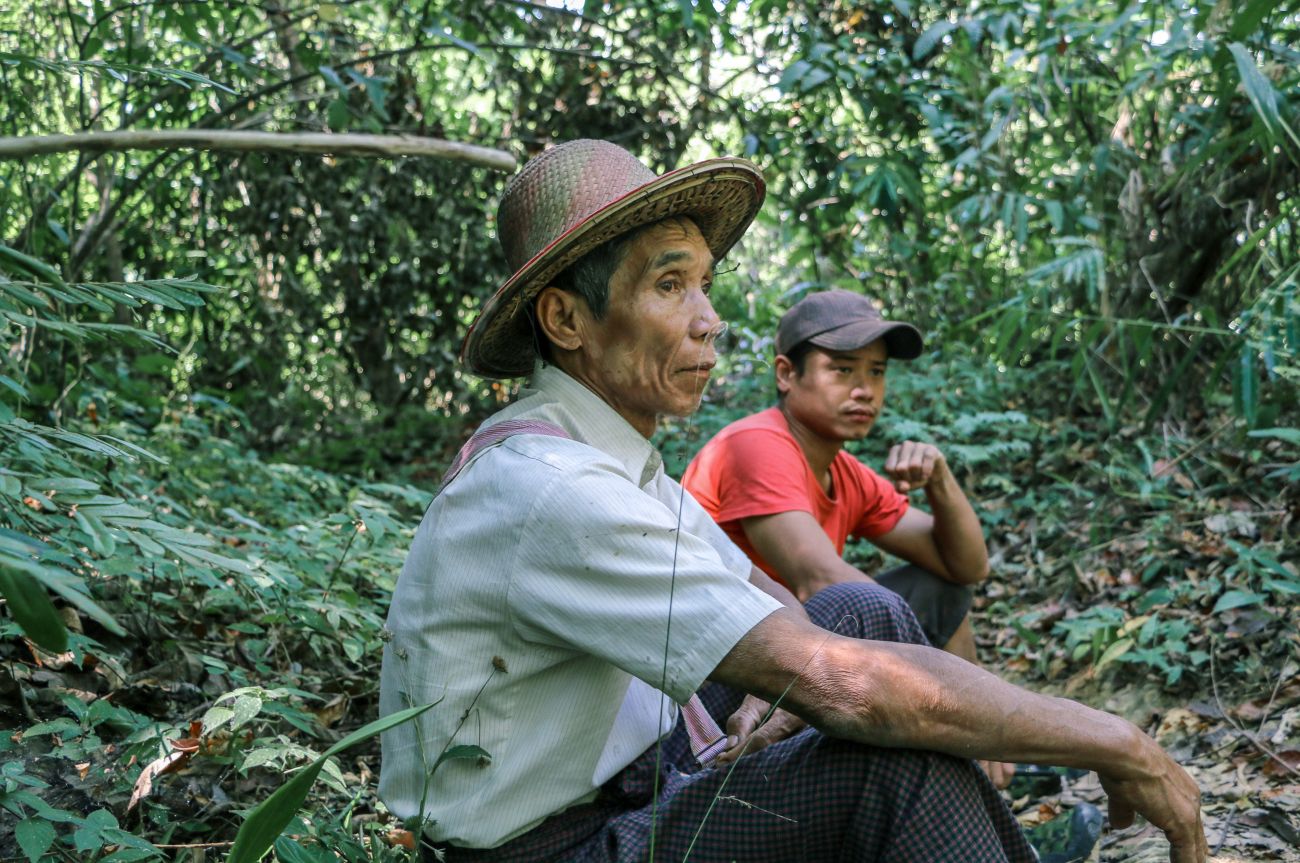
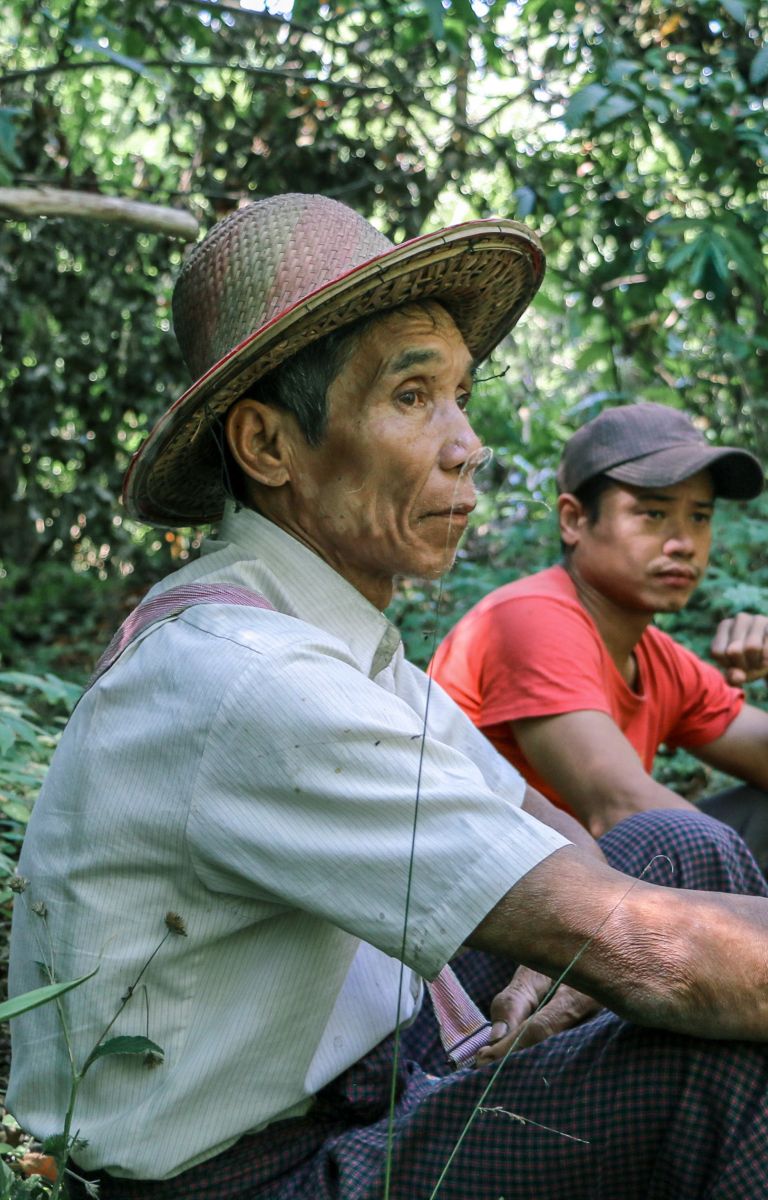
Before the pandemic, M.T., a pseudonym for a man who was interviewed anonymously, made his living selling edible and medicinal plants that he collected from the Yahaing Pyar Community Forest in Myanmar’s Rakhine State. But when the government restricted people’s movements to contain the spread of the virus, this livelihood became impossible. With food costs rising and his income down, M.T. turned to the savings he had built from selling forest plants. He says this has been his most important strategy for coping with the economic impacts of the lockdown.
M.T. was not alone. Extrapolating from the survey findings, RECOFTC estimated that personal savings generated by selling timber and non-timber forest products from community forests helped about three million people in the lower Mekong region to cope during the first months of the lockdowns.
Many community forests also manage collective funds and revolving credit schemes that provide low interest loans to their members. With incomes down and economic activity curtailed, these funds and schemes provided a lifeline in some situations, particularly as the pandemic wore on.
Forest credit schemes
In Heinze Village, Myanmar, for example, all 24 households that were members of the community forest user group at the time of the surveys had taken loans of 200,000 to 250,000 Myanmar kyat (US$140–US$180) from the revolving fund.
In Cambodia too, all 33 families who were members of the Samaky Trapang Totim Community Forest credit scheme borrowed during the first 10 months of the pandemic. They used the loans to pay for food, household costs and farm inputs.
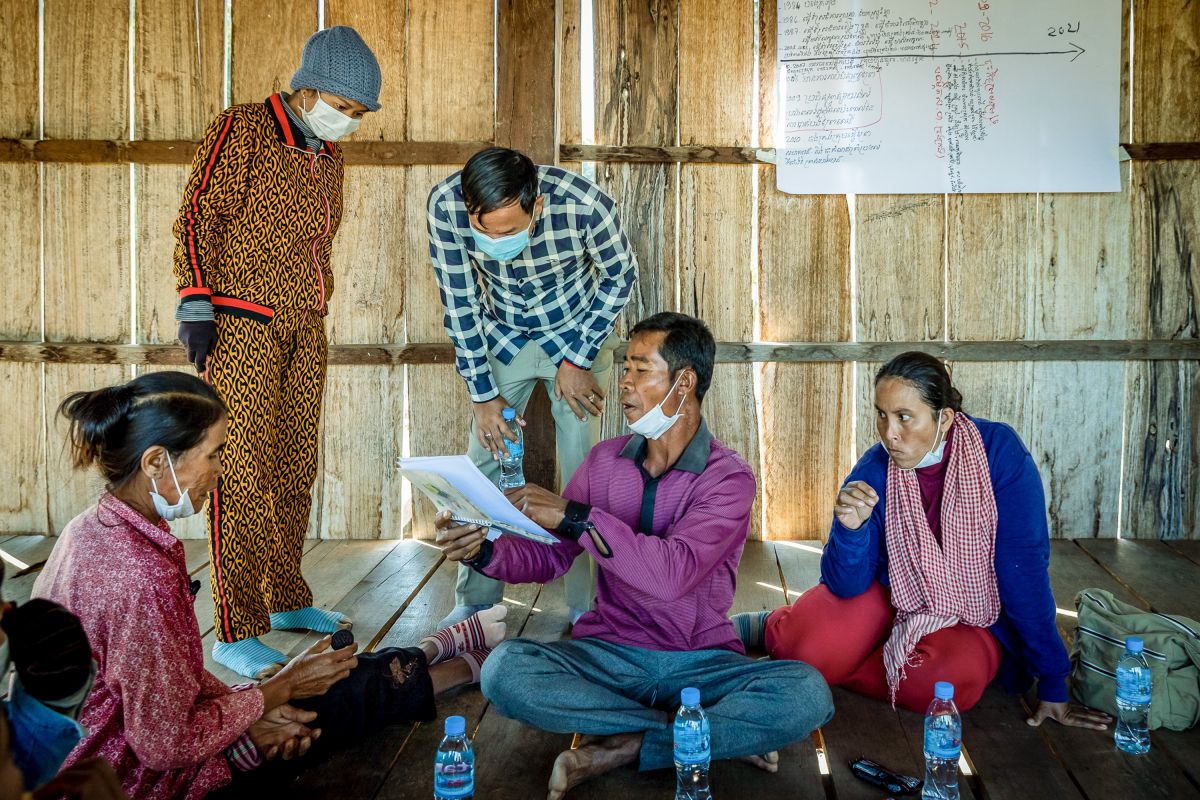
“Community forest credit schemes make finance available to people who would struggle to access bank loans or afford the high interest rates of informal moneylenders,” says Tol Sokchea of RECOFTC Cambodia, who led the survey in the country. “The funds grow as borrowers repay loans with interest. But in many cases, the funds are still too small to cope with urgent borrowing needs that occur in a time of crisis.”
In the case of Samaky Trapang Totim Community Forest, each member can borrow up to 500,000 Cambodian riel (US$120). But only 12 families can borrow at any one time because of the small size of the fund.
“The credit scheme is an alternative way for our members to borrow during the pandemic,” says Ton Mean, head of the Samaky Trapang Totim Community Forest. “Training and support from RECOFTC made the process possible for our community during this difficult time. We hope that as the credit capital increases, the community forest can contribute more to the community.”
Not every community forest has a credit scheme. Muong Phu in Viet Nam used to have one. Luong Van Nguyen, the village chief, explains that the community forest used to have a credit scheme but that people struggled to benefit from its one-year loans.
“Some people had a loan to raise pigs or ducks for one year and then failed because of diseases,” he says. “After their failure, they hesitated to access another loan. If there are loans from five to 10 years with a low interest rate of 0.5 or 0.6 percent, people may be ready to borrow. We also need experts guiding us on how to use loans effectively.”
Protection money
In Viet Nam’s Que Phong District, local hydroelectric plants generate money for forest environmental services. The payment that communities receive per hectare depends on their forest management and the capacity of the hydropower plant.
Even though the Muong Phu community forest has no credit fund, it benefits from another mechanism that has continued to deliver money into the heart of the community during the pandemic.
The Government of Viet Nam provides regular payments for forest environmental services, rewarding communities that protect forests because they ensure a water supply for downstream users. These payments are based on the area of forest the community protects. They remained constant throughout the first year of the pandemic, providing a reliable flow of money into the community.
“Thanks to effective forest protection, households still receive regular payments from the central government,” says Lo Thi Hien, head of the Women’s Association in Muong Phu, Viet Nam. “The amount is very meaningful because we are still poor and face a lot of challenges to maintain our daily lives.”
Lo explains that each of the village’s 235 households received three payments of 1 million Vietnamese dong (US$45) in 2020. The recipients are now expecting a second payment for 2021. These five payments amount to significant sums in a community in which 80 percent of the residents have an income of just 10 million to 20 million Vietnamese dong (US$450 to US$900).
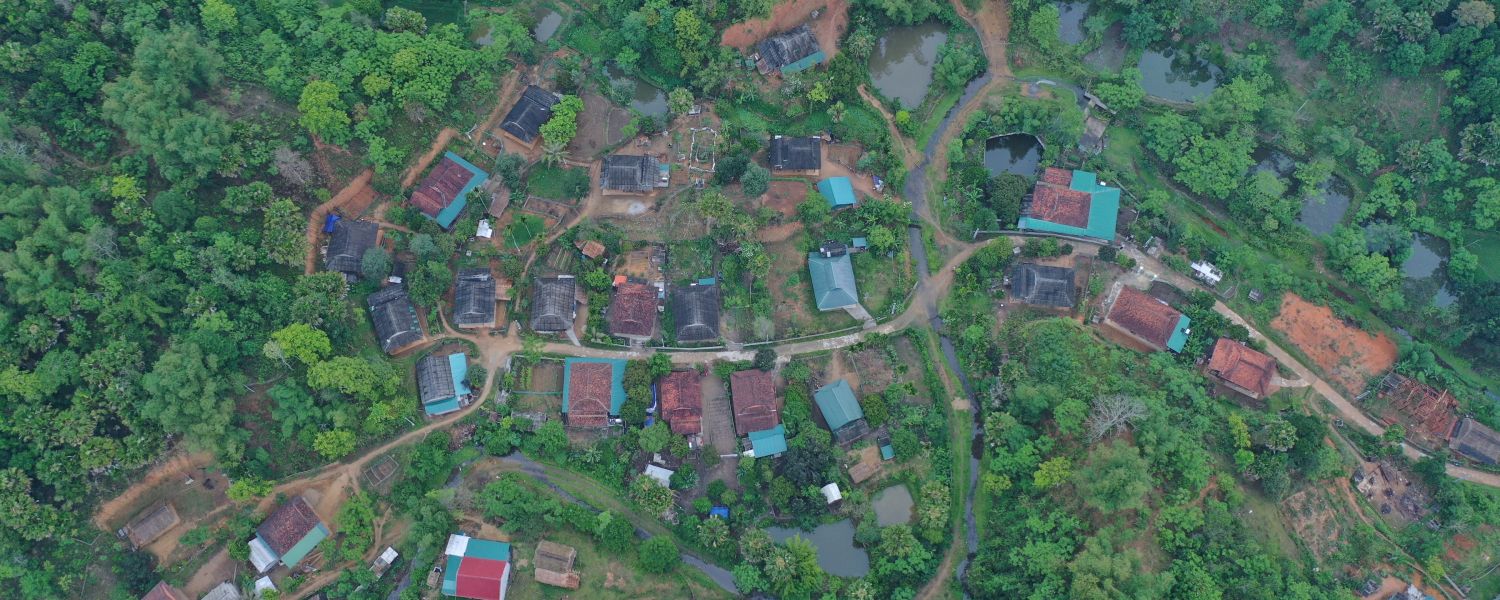
For such payments to make a difference to communities, they need a large area of forest. Muong Phu has 235 households and manages 2,337 hectares of good-quality forest. In contrast, with 228 households, Thanh Phong is about the same size but only manages 221 hectares of mostly degraded forest. Through the area-based payments, Muong Phu receives 13 times more earnings per household than Thang Phong.
Tree wealth
Another way that the villagers of Muong Phu earned income from their community forest after the onset of pandemic restrictions was by planting and selling timber. “Reforestation brings additional income,” says Lo, referring to payments that villagers receive. “Households with an acacia plantation forest can sell trees.”
In Koklouang Village in the Lao PDR, the community benefited from a RECOFTC project that helped them develop a network of teak producers and buyers. This helped to offset the initial economic impacts of the pandemic by increasing their income from their teak plantation. Between 2017 and 2020, the village of 109 families sold teak worth more than US$30,000.
“Our village authority has improved the teak plantation group and learned negotiation skills and group management,” says Chanthy Khammoungkhoun, of the Koklouang Village Forestry Unit. “We found a sustainable way to trade trees planted by households. This also supports the government’s green growth policy.”
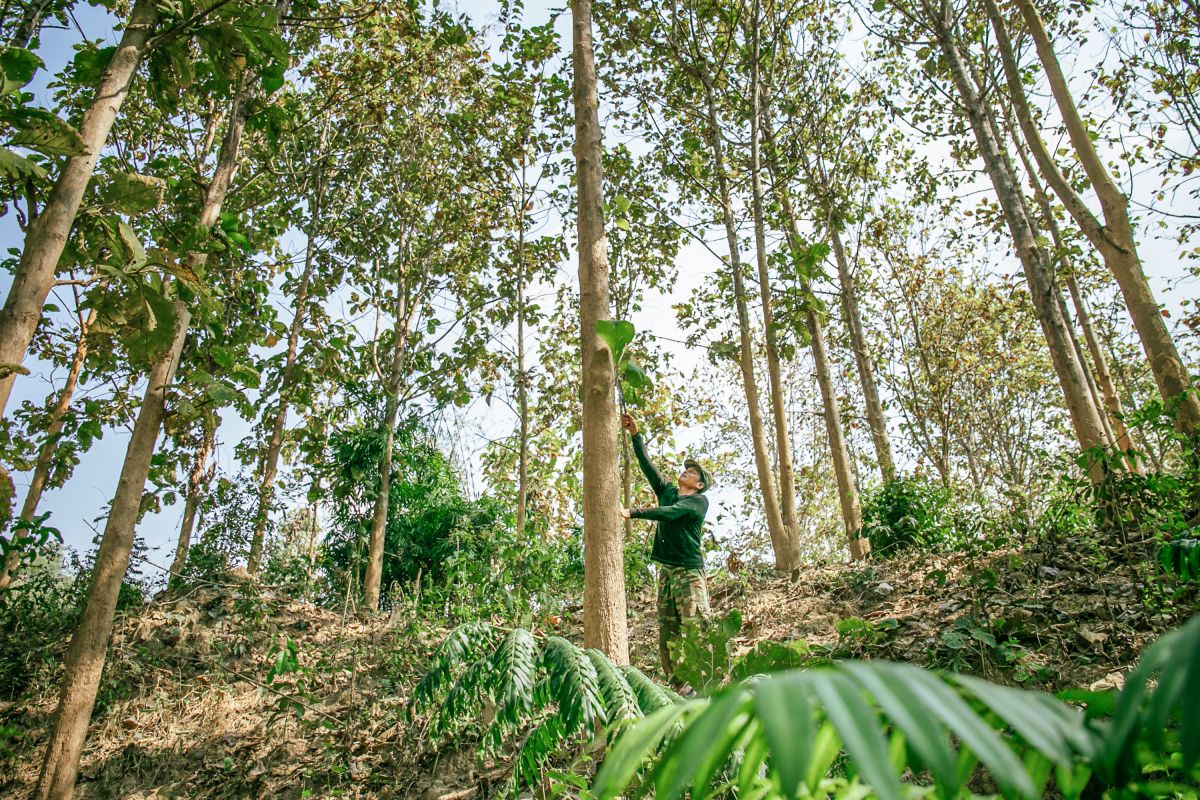
As these examples show, community forests provide a financial safety net in a time of crisis.
“Across the countries we surveyed, these forests provided a source of income and savings and, in some cases, had additional mechanisms for generating or distributing finance,” says RECOFTC Executive Director David Ganz. “But there are also many community forests that have no financial mechanism in place or whose credit schemes are too small to make a difference, particularly in crisis situations when demand for credit is high.”
Adds Ganz, “These findings point to a need to strengthen the ability of community forests and their members to generate and manage financial assets so that people are in a better position to withstand the next shock when it comes.”
